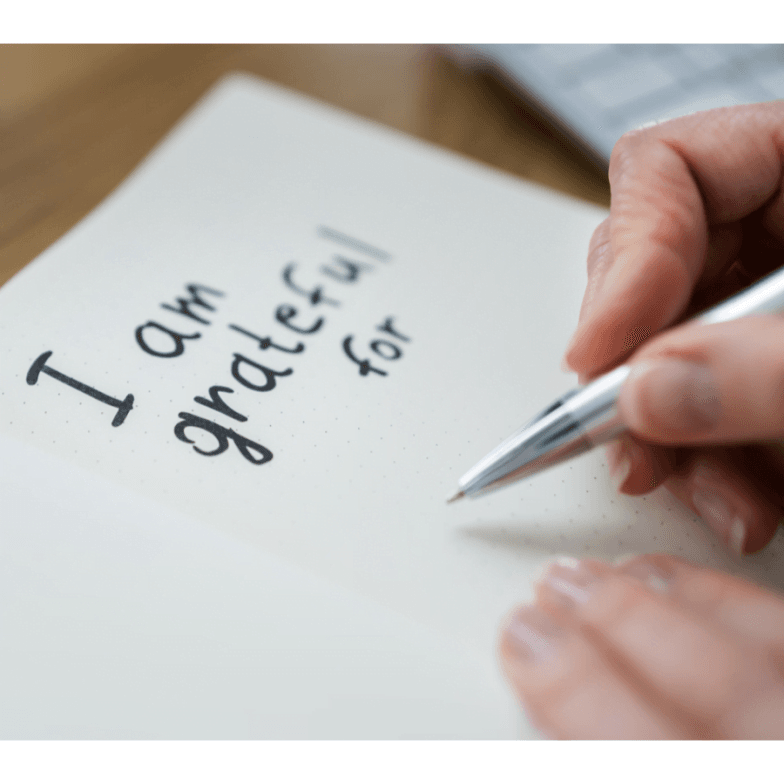DISCLOSURE: This post may contain affiliate links, which means we may receive a commission from Amazon or other affiliate partners if you make a purchase using these links. This is at no extra cost to you. For more information, please read our full Affiliate Disclosure.
Are you searching for a simple, effective way to nurture mental well-being and inner peace? Look no further than the power of journaling. Journaling is a practice that has been used for centuries to explore thoughts, feelings, and experiences. In this article, we will delve into the world of journaling and explore different types of journaling so you can pick the one that resonates with you the most.
Engaging in journaling for mental health purposes not only provides a platform to explore thoughts, feelings, and experiences but also offers a transformative well-being tool. Regardless of whether you’re a seasoned writer or a complete beginner, this step-by-step guide will equip you with everything you need to know to get started.
Journaling serves as a holistic practice that fosters a deep connection between the mind, body, and spirit. It allows individuals to explore inner thoughts, emotions, and experiences, promoting self-awareness and overall well-being.
Regular journaling allows you to gain clarity, process emotions, and tap into your unconscious mind. You’ll learn how to develop a consistent journaling practice that fits seamlessly into your daily routine, allowing you to release stress, set goals, and express your creativity.
Don’t underestimate the transformative power of putting pen to paper. Get ready to embark on a journey of self-discovery, healing, and personal growth through the practice of journaling.
What is journaling?
Journaling is a personal practice where individuals write down their thoughts, feelings, and experiences on paper or in a digital format. It serves as a tool for self-reflection and expression, helping to process emotions, gain insights into one’s thoughts, and cultivate a sense of inner peace.
Through the act of journaling, individuals can explore their inner world, track personal growth, and promote mental well-being by creating a space for self-discovery and emotional release. However, there are different types of journaling where some will be more appealing than others.
The Benefits Of Journaling For Mental Health
Journaling offers numerous benefits for mental health:

Self-Expression and Self-Reflection
It provides a safe space for self-expression and self-reflection, allowing you to explore your thoughts and emotions without judgment. By writing down your thoughts and feelings, you can gain a deeper understanding of yourself and your experiences.
Helps Stress Reduction
One of the key benefits of journaling is that it helps to reduce stress. Expressing yourself through writing can be a cathartic experience, providing a means to release pent-up emotions and thoughts. By putting your worries and concerns on paper, you can gain a new perspective and find relief from anxiety.
Promotes Self-Awareness
Journaling also promotes self-awareness. As you regularly write in your journal, you become more attuned to your thoughts, emotions, and patterns of behavior. This self-awareness can help you identify negative thought patterns and unhealthy habits, allowing you to make positive changes in your life.
Improves Problem-Solving Skills
Additionally, journaling can improve your problem-solving skills. When you write about a challenge or issue you’re facing, you can analyze it from different angles and come up with potential solutions. Writing down your thoughts helps to organize your ideas and clarify your thinking, making it easier to find creative solutions.
Incorporating journaling into your daily routine can lead to improved mental well-being, increased self-confidence, and enhanced self-esteem. It’s a powerful personal growth and self-discovery tool, providing a space for introspection and reflection.
Understanding The Different Types Of Journaling
There are various types of journaling, and finding the right one for you is essential. Explore the different types of journaling listed below, and decide which one resonates with you the most and supports your mental well-being. Here are a few popular types of journaling to consider:
REFLECTIVE JOURNALING
This type of journaling involves writing about your day, reflecting on your experiences, and exploring your thoughts and emotions. It helps you gain clarity and insight into your life. Remember that reflective journaling is a personal and flexible practice.
Below is a list of suggested questions for you to ponder. Adapt these questions to suit your preferences and focus on the aspects that resonate most with your current journey of self-discovery.
What Am I Grateful For Today?
Reflecting on gratitude can shift your focus to positive aspects of your life, fostering a more optimistic mindset.
What Were the Highlights of My Day?
Identify and celebrate the moments or achievements that brought joy, satisfaction, or a sense of accomplishment.
What Challenges Did I Face
Acknowledge the difficulties encountered during the day and explore potential lessons or strategies for overcoming similar challenges in the future.
How Did I Handle Stress or Adversity?
Reflect on your coping mechanisms and stress-management strategies. Consider whether there are alternative approaches that could be more effective.
What Emotions Did I Experience?
Explore the range of emotions you felt throughout the day. Understanding and expressing emotions contributes to emotional intelligence.
What Did I Learn About Myself?
Look for patterns or insights into your values, preferences, and reactions. Reflect on how your actions align with your core beliefs.

How Did I Contribute to Others or Receive Support?
Consider your interactions with others. Reflect on the ways you supported or were supported by friends, family, or colleagues.
What Are My Short-Term and Long-Term Goals?
Outline your goals, both immediate and long-term. Reflect on the steps you took today toward achieving those goals.
What Could I Have Done Differently?
Evaluate situations where you faced challenges or felt dissatisfied. Consider alternative actions or responses for personal growth.
What Brought Me Joy or Fulfillment?
Identify activities, hobbies, or moments that brought you joy or a sense of purpose. Reflect on how to incorporate more of these into your life.
What Do I Need to Let Go Of?
Consider whether there are any lingering negative thoughts, emotions, or habits that you need to release to promote your well-being.
What Am I Looking Forward To Tomorrow?
End your reflective journaling on a positive note by considering the opportunities, activities, or experiences you are excited about for the next day.
- Planner | Organizer | Gratitude Journal
- Undated Weekly & Monthly Life Planner
- Increase Productivity, Time Management, and Hit Your Goals!
MOOD TRACKER JOURNALING
A mood tracker journal is a tool that allows individuals to monitor and record their emotional states and overall mood over a specified period. Typically presented in a visual format, such as a graph or color-coded chart, it provides a quick and accessible way to observe emotional patterns. The benefits of a mood tracker journaling for mental health include:
Increased Self-Awareness:
By consistently tracking your mood, you develop a heightened awareness of your emotional state. Recognizing patterns, triggers, and fluctuations allows for a deeper understanding of your mental well-being.
Identifying Trends and Patterns:
Visual representations of mood data enable you to identify trends and patterns in your emotional experiences. This insight can help pinpoint factors contributing to mood changes, whether they are external events, lifestyle choices, or internal thoughts.
Effective Communication with Professionals:
For those seeking mental health support, a mood tracker journal provides tangible data to share with mental health professionals. It offers a comprehensive view of your emotional journey, aiding therapists or counselors in tailoring interventions and strategies.
Tracking the Impact of Interventions:
If you are implementing specific interventions or lifestyle changes to enhance your mental health, a mood tracker allows you to observe their impact over time. This feedback loop helps you fine-tune strategies that positively influence your emotional well-being.
Promoting Positive Habits:
Regularly engaging with a mood tracker encourages a habit of self-reflection. It prompts you to consider daily factors affecting your mood and promotes mindfulness, which is beneficial for mental health.
Validation of Progress:
As you review past entries, a mood tracker serves as a visual record of your emotional journey. Witnessing positive changes and progress can be validating and motivating, reinforcing your efforts toward better mental well-being.
Preventing Overwhelm:
By breaking down your emotional experiences into manageable data points, a mood tracker prevents overwhelm. It simplifies the process of understanding complex emotions, making it easier to address and manage one step at a time.
BEST SELLER
- Helps you to stay mindful of your mood and feelings each day.
- A perfect tool for self-reflection, self-care, and growth.
GRATITUDE JOURNALING
Gratitude journaling involves focusing on the things you’re grateful for each day. By developing a sense of gratitude, you can shift your perspective and develop a more positive mindset. Gratitude journaling is one of the popular gratitude practice methods. Journaling to express thankfulness is also used in spiritual practice It is used as a tool to nurture mindfulness and express appreciation for one’s abundance and blessings. Gratitude journaling develops a deeper connection with oneself and the universe.
Tips for Gratitude Journaling
Consistent Daily Practice: Create a habit of gratitude journaling by setting aside a specific time each day to reflect on and record things you are thankful for. Consistency enhances the effectiveness of this practice.

Specific and Detailed Entries: Instead of generic statements, be specific and detailed about what you are grateful for. Describe the people, events, or moments that brought joy, allowing for a deeper connection to the positive aspects of your life.
Variety in Gratitude Categories: Expand your focus beyond the obvious to include various aspects of your life. Acknowledge gratitude for relationships, personal achievements, nature, or even simple pleasures, ensuring a well-rounded appreciation.
Express Emotional Connection: Don’t just list things; express the emotions associated with each entry. Describe how each moment or person makes you feel, deepening the emotional impact and reinforcing the positive connections in your life.
Review and Reflect: Periodically review your gratitude entries to reflect on the positive changes or patterns. This not only reinforces the practice but also allows you to see the cumulative impact of gratitude on your mindset and well-being.
DREAM JOURNALING
Dream journaling involves recording your dreams as soon as you wake up. It can help you uncover hidden messages from your unconscious mind and gain a deeper understanding of your dreams.
Remember that dream interpretation is subjective, and the meaning of dreams can vary for each individual. The goal of dream journaling is to explore your inner world, gain self-awareness, and potentially uncover connections between your dreams and waking life experiences.
Dream journaling involves recording your dreams as soon as you wake up to capture details and emotions before they fade from memory. Here’s a step-by-step guide on how to do dream journaling:
Keep Your Journal Nearby:
Place a journal or notebook and a pen next to your bed. Make it easily accessible so you can reach for it as soon as you wake up.
Wake Up Naturally:
Allow yourself to wake up naturally without using an alarm if possible. This helps you wake up from the dream state more gently.
Stay Still and Reflect:
Upon waking, stay still for a moment with your eyes closed. Try to recall any dreams or fragments of dreams that you experienced during the night.
Capture Details:
Open your eyes and start writing down the details of your dreams. Include as much information as possible, such as locations, people, events, and emotions. Note any symbols or recurring themes.
Use Descriptive Language:
Write in a descriptive and detailed manner. Include sensory experiences, colors, and any strong emotions you felt during the dream.
An empowering Daily Journal that guides you to:
- Practice Gratitude and Self-Assessment
- Organize Goals with Daily Reflections
- Track Overall Mental Health and Self-Care
Record the Date and Time:
Write down the date and time you woke up. This can help track patterns or identify connections between dreams and events in your life.
Draw or Sketch:
If you enjoy drawing or sketching, consider adding visual representations of key elements from your dream. This can enhance your understanding and provide a different perspective.
Reflect on Symbols and Meanings:
After recording the dream, take a moment to reflect on any symbols or recurring themes. Consider what these elements might represent in your waking life.
Review Periodically:
Periodically review your dream journal to identify patterns, recurring symbols, or emotions. This can offer insights into your subconscious mind and contribute to self-discovery.
Be Consistent:
Practice dream journaling consistently, even if you don’t remember a dream every night. Over time, the habit may improve your dream recall.
STREAM-OF-CONSCIOUSNESS JOURNALING
This type of journaling involves writing without any specific structure or goal. It’s a free-flowing and spontaneous form of writing that allows you to tap into your unconscious mind.
Here’s a brief guide on how to do it:
Set the Scene:
Find a quiet and comfortable space where you can write without interruptions.
Start Writing:
Begin with a prompt or just start writing about whatever comes to mind. Don’t worry about grammar, spelling, or punctuation.
Here are a few examples of prompts:
- Right now, I am feeling…
- If I could talk to my younger self, I would say…
- Today’s highlights include…
- The one thing I’ve been avoiding thinking about is…
- If my thoughts were a color, they would be…
- What I’m currently excited about is…
- A challenge I’m facing and how I feel about it is…
- If I could be anywhere right now, it would be…3.

Keep Pen Moving:
Write continuously, allowing your thoughts to flow onto the paper. Don’t pause to overthink or edit.
Follow Associations:
If your mind naturally jumps from one thought to another, follow those associations. Let the writing evolve organically.
Explore Emotions:
Express your feelings and emotions freely. This form of journaling is an opportunity to explore your innermost thoughts without judgment.
Don’t Judge or Edit:
Resist the urge to judge or edit your writing. The goal is to capture the raw and unfiltered stream of consciousness.
Set a Time Limit:
If you’re new to stream-of-consciousness journaling, you can set a specific time limit, such as 10 or 15 minutes, to make it more manageable.
Reflect Afterwards:
After your session, take a moment to reflect on what you wrote. It can offer insights into your current mindset, concerns, or creative ideas.
How long should a journal entry be?
The length of a journal entry is entirely personal and flexible. It can range from a few sentences to several pages, depending on your comfort and the depth of reflection you seek. The key is to express your thoughts and feelings authentically, allowing for a meaningful and satisfying journaling experience.
The key is to express yourself in an authentic and meaningful way.
BULLET JOURNALING
As you can see, there are many different types of journaling possibilities. However, we are going to look at one more variation and this is bullet journaling. Bullet journaling for mental health involves creating a personalized system to track, organize, and reflect on your thoughts and emotions. It’s a versatile system that can be tailored to suit your needs and preferences.
Bullet journaling is particularly well-suited for individuals who enjoy creativity and value the freedom to express themselves uniquely. The system is flexible, allowing users to design layouts, incorporate artistic elements, and adapt the journal to their personal preferences.
Individuals who choose this type of journaling usually prefer blank or dotted journals so they can use their artistic skills to create, organize, and express themselves in their unique way. Here’s a step-by-step guide:
How To Bullet Journal For Mental Health
Start with a Key: Create a key that assigns symbols to different types of entries. For example, use a dot for tasks, a star for achievements, and an exclamation mark for highlights. This key will help you easily identify and categorize entries.
Set Up a Future Log: Create a future log to jot down important events, goals, or appointments in the upcoming months. This provides an overview of what to expect and plan for.
Monthly Spreads: Dedicate a spread to each month, where you can set monthly goals, track habits, and note significant events. Include a mood tracker to monitor your emotional well-being throughout the month.
Weekly Spreads: Break down each month into weekly spreads. Use these to detail tasks, events, and habits for the week. Include sections for gratitude, affirmations, or reflections to promote a positive mindset.
Daily Logs: Create daily logs for more detailed entries. Use bullet points to note tasks, events, and thoughts. Implement the “rapid logging” technique, where you use short, concise sentences to capture the essence of each entry.
Track Habits: Devote a section to track habits related to mental health, such as sleep patterns, exercise, or mindfulness practices. This helps you identify patterns and areas for improvement.
Include Self-Care Collections: Integrate self-care collections, such as a page with self-care ideas, inspirational quotes, or a gratitude log. These elements contribute to maintaining a positive and nurturing mental health focus.
Reflect Regularly: Set aside time to reflect on your entries. Identify recurring themes, triggers, or positive moments. Use this reflection time to adjust goals and strategies for better mental well-being.
- Bleed Proof Thick White Paper
- 200 Numbered Dot Grid Pages
- Includes 3 satin Bookmarks
- BONUS Stickers included
Getting Started With Journaling: Tools And Supplies
To start your journaling practice, you’ll need a few basic tools and supplies. Remember, the most important thing is to find tools and supplies that make you feel excited and motivated to write. Personalize your journaling experience to make it truly your own.
Here’s what you’ll need:
Journal: Find a journal that you love and that inspires you to write. Whether it’s a beautiful notebook or a digital journaling app, choose something that feels right for you. It also depends on which of the different types of journaling you decide on as to whether you prefer a blank, lined, or dotted journal.
Pen or pencil: Select a writing instrument that you enjoy using. Experiment with different pens or pencils to find one that feels comfortable in your hand.
Optional Stickers: Stickers are commonly used in journaling as decorative elements, helping to add a creative and visually appealing touch to pages. They can be used to highlight important entries, signify specific events or moods, or simply enhance the overall aesthetics of the journal. Stickers offer a quick and easy way to personalize and express individual style within the journaling process.
Optional Art Supplies: If you’re interested in adding a creative element to your journaling practice, consider investing in art supplies like colored pens, markers, or watercolors. These can be used to add visual elements or illustrations to your journal.
How to Start Journaling For Mental Health
Having explored the different types of journaling available, it’s time to make a start. However, before you begin journaling, take some time to reflect on your goals and intentions. What do you hope to achieve through journaling? What aspects of your mental well-being do you want to focus on?
Setting goals and intentions can help guide your journaling practice and give it a sense of purpose. For example, if you want to reduce stress, you can set an intention to write about your daily stressors and explore strategies for managing them. If you’re seeking personal growth, you can set a goal to write about your values, aspirations, and areas for improvement.
By clarifying your goals and intentions, you can make the most out of your journaling practice and tailor it to your specific needs.
Establishing A Journaling Routine
Consistency is key when it comes to journaling. To develop a journaling routine, choose a specific time of day that works best for you. It could be in the morning to set the tone for the day, during a lunch break to reflect on the morning, or in the evening to unwind and process the day’s events.
Make journaling a non-negotiable part of your daily routine. Set aside a dedicated time and commit to showing up for yourself each day. Starting with just a few minutes a day can make a significant difference in your mental well-being.
Remember, there’s no right or wrong way to journal. Some days, you may write a few sentences, while other days, you may fill multiple pages. The important thing is to be consistent and make journaling a habit.
Conclusion: The Power Of Journaling For Mental Health And Inner Peace
Journaling is a practice that has the power to transform your mental well-being and bring you a sense of inner peace. It offers a safe space for self-expression, self-reflection, and personal growth.
Through journaling, you can gain clarity, process emotions, and tap into your unconscious mind. There are many different types of journaling to choose from. Whether you opt to reflect on your day, practice gratitude, explore your dreams, or set goals, journaling can support your mental health journey in various ways.
Remember, the key to successful journaling is consistency and authenticity. Show up for yourself each day, and allow your thoughts and emotions to flow freely onto the pages of your journal. Embrace the power of journaling as a tool for self-discovery, healing, and personal growth.
So, grab your journal and pen, and embark on this transformative journey of self-exploration. Discover the incredible benefits that journaling can bring to your mental well-being and find inner peace through the power of putting pen to paper. Your mental health deserves it.
Share Your Thoughts And Experiences
Your insights and experiences are invaluable—share them with us by leaving a comment below! We’d love to hear from you.





